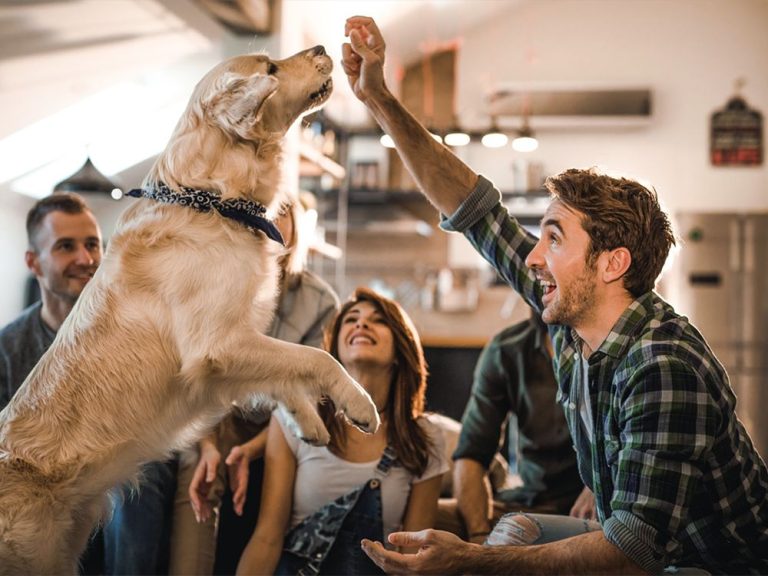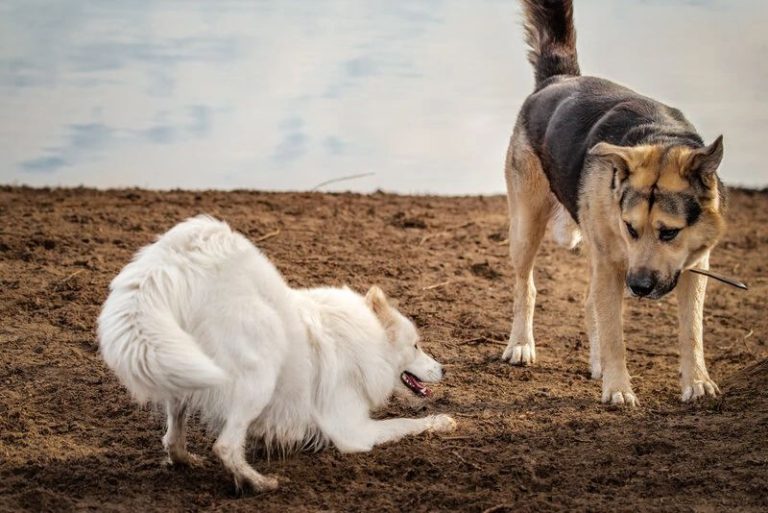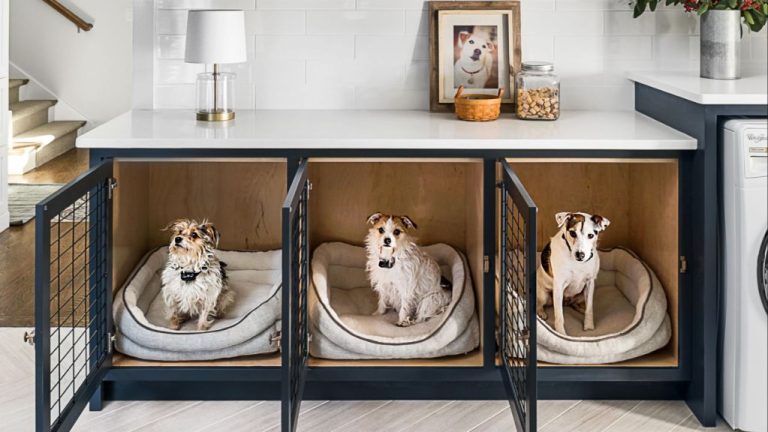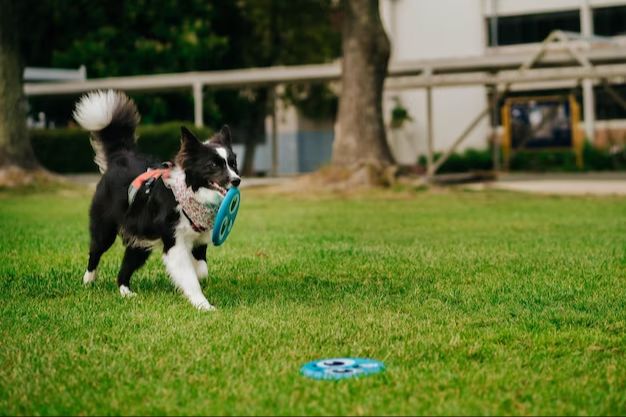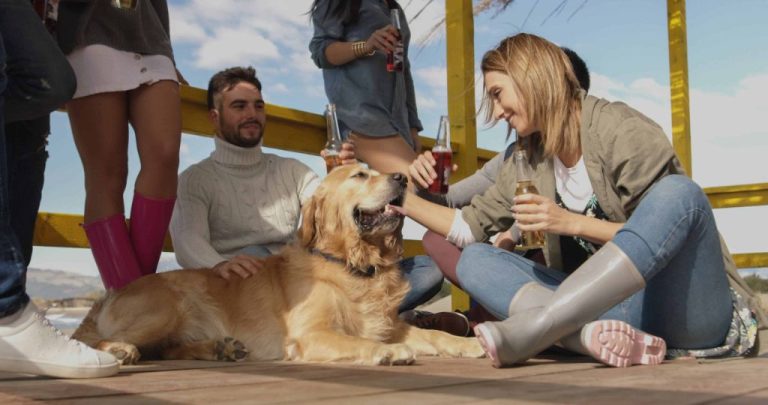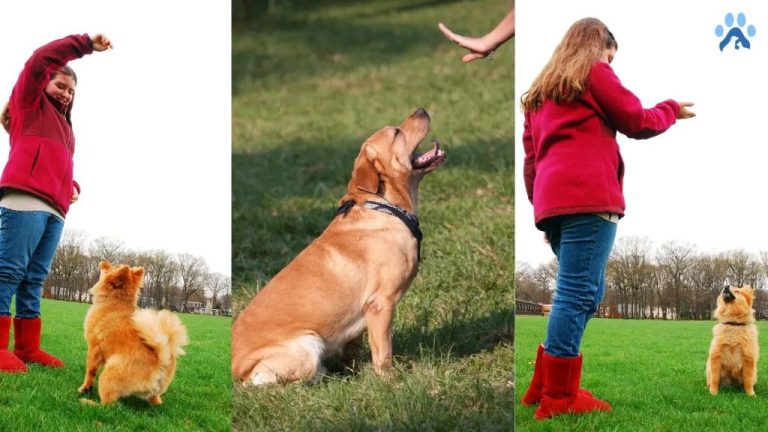The Beginner’S Guide To Adopting A Shelter Dog
Adopting a dog from an animal shelter can be a very rewarding experience. Shelter dogs are in need of loving homes, and adopting one can save a life as well as provide you with a new canine companion. This guide will provide an overview of the shelter adoption process and the many benefits of adopting a shelter dog.
The shelter adoption process involves choosing the right dog for your home and lifestyle, meeting potential dogs at the shelter, going through the application and screening process, bringing your new dog home, and providing proper care and training. Adopting a shelter dog has many advantages over purchasing a dog from other sources. Shelter dogs are typically already spayed/neutered, microchipped and up to date on vaccines. Adopting from a shelter also reduces overcrowding and euthanasia rates. Additionally, mixed breed shelter dogs are often healthier due to increased genetic diversity.
This guide will walk you through each step of the adoption process to help ensure a smooth transition home with your new canine companion. With some preparation and understanding of a shelter dog’s background, adopting a shelter dog can be extremely rewarding for both you and the dog.
Deciding If You’re Ready
Adopting a dog is a major commitment that requires careful consideration. Before getting a dog from a shelter, take time to honestly assess if you have the lifestyle, schedule, finances and living situation to properly care for one.
Having a dog is a 10-15 year responsibility. Puppies require constant supervision, training and socialization in their first year. All dogs need daily exercise, play time, affection and mental stimulation. Review your schedule to see if you can commit to taking your dog out multiple times per day, including before and after work.
Dogs are also an expense. Food, supplies, veterinary care and emergencies can cost hundreds to thousands per year. Make sure you are financially stable enough to cover these costs. Having savings or pet insurance is recommended.
Your living situation should also accommodate a dog. If you rent, make sure your landlord allows pets. Have enough indoor and outdoor space for your dog to move around comfortably. Be prepared to dog proof your home and yard.
Never adopt a dog on impulse. Take time to honestly assess your lifestyle and resources first. If you determine you can properly care for a dog for their entire life span, then you are likely ready for this rewarding commitment. See: Should You Get a Dog? 10 Signs You’re Ready
Choosing the Right Dog
When adopting a dog from a shelter, it’s important to consider factors like breed, age, activity level, and trainability to find the right match for your lifestyle. Certain breeds tend to have predictable traits, so identify breeds that align with your needs. For example, herding breeds like Collies need daily exercise while companion breeds like Cavalier King Charles Spaniels require less.
Regarding age, puppies require more time for housetraining and socialization while older dogs often come already trained. Consider adopting both a puppy and an older dog if you want the experience of raising a puppy but also want a calmer pet.
Look for a dog with an activity level that matches yours. If you are very active, an energetic breed like a Labrador Retriever may be best. For a more relaxed lifestyle, choose mellow breeds like Bulldogs or Greyhounds. Observe how much exercise a dog needs when meeting them.
Assess the dog’s trainability by teaching them basic cues like sit and stay during your meetings. Intelligent breeds like Shetards and Poodles tend to be highly trainable. If having an obedient dog is important, avoid stubborn independent breeds like Beagles or Afghan Hounds.
Meeting Dogs at the Shelter
When meeting dogs at the shelter, it’s important to keep a few things in mind to ensure the meet and greet goes smoothly. Here are some tips for effectively assessing a dog’s personality and needs during your interaction:
Be calm and take cues from shelter staff. Let them facilitate introductions, especially for shy or nervous dogs. Treats can help make a dog feel more comfortable. Avoid reaching over the dog’s head, as this can seem threatening [1].
Ask questions of the dog’s foster parent or shelter staff to learn about the dog’s personality, needs, and quirks. Key questions: How does the dog do with other pets? How is the dog around children? Does the dog have any medical issues? What type of home is best suited for the dog? [2]
Observe how the dog responds to you and interacts with his environment. Does he seem anxious, relaxed, excited? Does he seek out affection or prefer to keep to himself? Watch for signs of aggression like growling or snapping.
Take the dog for a short walk to see how he handles the leash. Does he pull or walk calmly? Does he seem interested in other dogs or people? Walking provides a good chance to bond.
Spend time interacting through play. Does he like to fetch? What kind of toys or games does he prefer? This can reveal a lot about his energy levels and personality.
Be patient and go slowly, especially for shy dogs. Multiple short visits can help a dog warm up to you. Don’t be afraid to request longer interaction sessions.
Trust your instincts. Adopting a shelter dog is a big commitment, so make sure you choose the right match for your home and lifestyle.
The Adoption Process
The adoption process at most animal shelters follows a standard set of steps to ensure each dog finds the right forever home. Here’s what you can expect:
First, you’ll need to complete an adoption application with the shelter, either online or in person. The application asks for basic information about yourself, your family, your home environment, and your ability to care for a dog. Shelters want to ensure every dog is matched with an owner who can properly provide for them, so answer honestly. Some shelters require a small application fee.
Next, you’ll have a meet and greet. A shelter counselor will interview you to learn more about the type of dog you hope to adopt. Then, you’ll meet some eligible dogs at the shelter based on your desired breed, age, energy level and temperament. This is your chance to see how you get along. Ask questions about each dog’s history and care needs.
Finally, once you’ve chosen your new furry friend, there is paperwork to finalize the adoption. You’ll need to provide personal information and sign an adoption contract stating you will properly care for the dog. There is typically an adoption fee which covers initial vet exams, vaccines, microchipping and spay/neuter procedures. Then you can take your shelter dog home!
For more details on what to expect, check out Petcube’s guide: https://petcube.com/blog/how-to-adopt-a-dog/
Bringing Your Dog Home
Preparing your home and schedule for your new dog is very important for a smooth transition. Be sure to dog-proof your home by removing any poisonous houseplants, securing chemicals and medications, and keeping trash cans lidded (1). It’s also a good idea to crate train your dog by setting up a crate with a comfy bed in a quiet area (2). You’ll want to plan to take the first few days off work or arrange for a pet sitter to help your dog acclimate.
If you have other pets at home, some pre-planning will help everyone get along. Keep the new dog separated initially, allowing them to meet briefly through a gate. Take the dogs on walks side-by-side until they seem comfortable together. Supervise all interactions until you’re confident they get along. With patience and proper introductions over several weeks, they will likely become fast friends (3)!
The first day home, keep things low-key to help your new dog decompress. Take them outside regularly and provide water, toys, treats, and a comfy place to rest. Stick to your normal routine as much as possible. With time and love, your shelter dog will transition smoothly into your home!
- (1) https://www.petfinder.com/dogs-and-puppies/adoption/new-dog/tips-for-the-first-30-days-new-dog/
- (2) https://www.samcoralphoto.com/10-tips-welcome-rescue-dog-home/
- (3) https://www.dogsoutloud.org/2013/05/so-youve-brought-home-a-new-dog-now-what/
Supplies You’ll Need

Once you adopt your shelter dog, there are some basic supplies you’ll need to get started. These include:
Collar and Leash
A properly fitted collar and leash are essential for walks and identification tags. Choose a flat or martingale collar made of nylon or leather, and an adjustable 4-6 foot leash. Make sure the collar fits snugly but allows two fingers under it (Chewy, 2023).
Crate
A crate provides a secure space for your dog when you can’t supervise. Choose a crate big enough for your dog to stand, turn around, and lie down. It can aid in housetraining and preventing destructive behaviors (NYTimes, 2021).
Bowls
You’ll need bowls for food and water. Stainless steel or ceramic bowls are durable options. Choose a size appropriate for your dog’s needs.
Toys
Provide toys to enrich your dog’s environment and give mental stimulation. Rotate different types of toys to keep things interesting.
Bed
A comfortable dog bed gives your pet a place to relax and sleep. Measure your dog when lying down to ensure a proper fit.
Housetraining
One of the most important things to focus on when bringing home an adopted dog is housetraining. Many adult dogs available for adoption may not be fully housetrained or have acquired bad habits from previous living situations. It’s crucial to be patient and put in the effort to properly housetrain your new dog. Crate training can be an incredibly useful tool in this process.
A crate should be just large enough for your dog to stand up, turn around, and lie down comfortably. The crate helps dogs learn to hold their bladder and associate the crate with rest and relaxation. When first starting crate training, only leave your dog in the crate for short periods before gradually increasing the time as they adjust. Be sure to give your dog exercise, food, water, and potty breaks before crating to help them hold it (AKC).
It’s important to establish a predictable schedule for taking your dog outside to relieve themselves. Take them out first thing in the morning, after meals, after playtime, and before crating at regular intervals. Frequent trips outside will help reinforce where to go potty until they learn. Always reward and praise your dog for going potty in the right spot outside to encourage the behavior (Carol’s Canine Training).
Have patience if your adopted dog has accidents at first. Consistency with the schedule and rewards will lead to success. Never punish a dog for going inside, as that can set back progress. Simply clean up any messes thoroughly with an enzymatic cleaner. With time and positive reinforcement, your adopted dog will master this important skill.
Establishing a Routine
Establishing a consistent daily routine for your new dog is crucial to help them adjust to their new home. Having a predictable schedule helps dogs feel secure and minimizes anxiety. Focus on establishing routines around key activities like feeding, walking, playtime and training.
Create a schedule for feeding your dog twice a day at consistent times, such as first thing in the morning and again in the evening. Feed approximately the same amount of food at each mealtime. Most experts recommend leaving the food bowl down for no more than 10-15 minutes at a time to prevent overeating.
Take your dog out for bathroom breaks and walks on a regular schedule, about every 6-8 hours for an adult dog. Puppies will need to go out more frequently. Bring your dog out first thing in the morning, after meals, and before bedtime at minimum. Walks are also important bonding time and mental stimulation.
Incorporate playtime and training into your daily routine as well. Have designated toy play sessions and make sure your dog has boredom-busting chew toys available. Formal training sessions should be 5-15 minutes max, but you can reinforce training throughout the day. Maintaining this schedule prevents problem behaviors in dogs.
While flexibility is fine on occasions, sticking to consistent routines as much as possible will help your new dog feel right at home.
Providing the Best Care
One of the most important aspects of caring for your newly adopted dog is providing proper healthcare and grooming. It’s critical to establish a relationship with a veterinarian right away. Schedule a visit within the first few days after adoption so the vet can give your dog a general wellness exam and identify any potential health issues early on [1]. Discuss with your vet an initial vaccine schedule, flea/tick/heartworm preventative medication, and any other regular care your dog may need.
Grooming is also essential for adopted dogs. Many shelters do not have the resources to regularly bathe and groom each animal. Make an appointment with a professional groomer within the first month. They can give your dog a sanitary cut, trim nails, clean ears, and identify any skin/coat issues. Establish a regular grooming schedule based on your dog’s specific needs. Long-haired dogs require more frequent brushing and trimming [2].
Of course, providing excellent at-home care between vet and groomer visits is key. Make sure your dog eats a nutritious diet, exercises daily, and receives plenty of love and attention. Monitor their health and behavior closely, especially in the first few months, to identify any concerns requiring veterinary care. With proper healthcare and grooming, your adopted dog will thrive in their new forever home.
Enjoying Your New Best Friend
After going through the adoption process and bringing your new dog home, the fun of bonding and creating a loving relationship truly begins. Make sure to spend plenty of dedicated one-on-one time with your new furry friend through activities like walks, playtime, cuddling, grooming, and training. Going through the initial adjustment period together forms a strong bond between you and your dog.
Capture your special moments by taking lots of pictures and videos during your first days and weeks together. You’ll love looking back on the memories of your dog settling into his new home and family. Consider creating a photo album or framed collage using your favorite shots from your dog’s early days with you.
Share your dog adoption story and photos on social media. Post about your experience at the shelter, your first meetings, and bringing your new pal home. Spread the word about rescue dog adoption and inspire others to save a life too. Tag the shelter in your posts – they love seeing updates on their former rescue dogs thriving in new homes.
By adopting a shelter dog, you’re giving them a chance at a happy life. The rewards of offering a forever home to a dog in need are immeasurable. The companionship and unconditional love you’ll receive in return make rescue adoption such a special and fulfilling experience. Enjoy embarking on this new chapter together!

